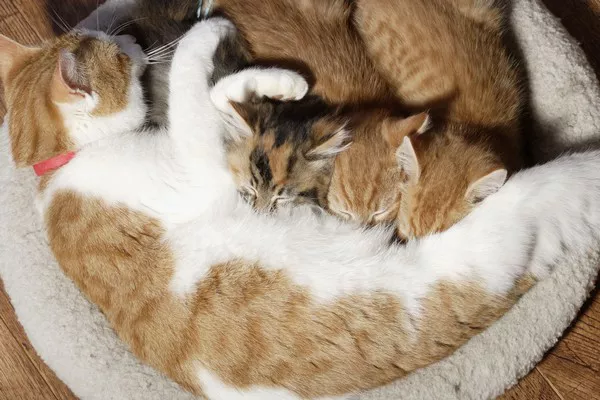Akita dogs are known for their loyalty, strength, and majestic appearance. However, they also have a reputation for being aggressive if not properly trained and socialized. It’s important to remember that aggression in Akitas is not an inherent trait but rather a result of inadequate training or socialization. In this article, we will explore how to train an Akita to not be aggressive, offering guidance and insights into turning your Akita into a well-behaved, non-aggressive companion.
Understanding Akita Aggression
Before we dive into the specifics of training, it’s crucial to understand the factors that can contribute to aggression in Akitas. Akitas are a dominant and independent breed, which can make them prone to aggressive behaviors if not properly managed. Their protective nature can sometimes be misunderstood as aggression. Akita aggression is often triggered by fear, insecurity, territoriality, or a perceived threat. Recognizing these triggers is the first step in addressing and preventing aggression in your Akita.
Early Socialization is Key
One of the fundamental aspects of how to train an Akita to not be aggressive is early socialization. It is best to start socializing your Akita as a puppy, ideally between the ages of 7 to 14 weeks. Exposing your Akita to various people, animals, environments, and experiences during this critical period can help them become more well-adjusted and less likely to exhibit aggressive behavior.
Take your Akita to puppy classes, introduce them to other dogs and people, and expose them to different settings. This will help your Akita build positive associations with new experiences and individuals, reducing the likelihood of aggression when faced with the unfamiliar in the future.
Positive Reinforcement Training
Training an Akita to be non-aggressive should always be based on positive reinforcement. This approach focuses on rewarding desired behaviors rather than punishing unwanted ones. When your Akita exhibits good behavior, such as remaining calm around strangers, provide treats, praise, and affection. Positive reinforcement helps your dog understand what you expect from them and encourages them to repeat these behaviors.
When your Akita is exposed to potentially challenging situations and reacts calmly, be sure to reward them immediately. This will reinforce the idea that remaining calm leads to positive outcomes.
Consistent Obedience Training
Consistent obedience training is essential in teaching your Akita to be non-aggressive. Obedience commands such as “sit,” “stay,” “leave it,” and “heel” can be used to redirect your Akita’s attention and control their behavior in various situations. Consistency in training is key – everyone in your household should use the same commands and reinforce the same behaviors.
When training an Akita to not be aggressive, be patient and maintain a calm, assertive demeanor. Akitas respond well to assertive yet gentle guidance. Use clear, concise commands and reward good behavior promptly. Obedience training will help your Akita understand their place in the family and establish you as the leader.
Proper Socialization with Other Animals
Akitas have a natural tendency to be dominant and territorial, which can sometimes lead to aggression towards other animals, especially dogs of the same sex. To prevent this aggression, early and consistent socialization with other dogs is crucial.
Start by introducing your Akita to well-behaved and friendly dogs in a controlled and supervised environment. Gradually expose them to different dogs and situations, always keeping a close eye on their behavior. Positive interactions with other dogs can help your Akita learn appropriate social skills and reduce the likelihood of aggression.
Manage Territorial Aggression
Territorial aggression is a common issue in Akitas, as they tend to be protective of their home and family. To address territorial aggression, it’s important to establish your role as the pack leader and let your Akita know that you are in control of the territory.
When someone unfamiliar comes to your home, introduce them to your Akita in a controlled manner. Allow your dog to approach and investigate the newcomer at their own pace, and reward calm behavior. Avoid forcing interactions, as this can escalate fear and anxiety in your Akita. Over time, they will become more accepting of new people in their territory.
Recognizing Fear Aggression
Fear aggression can manifest when your Akita feels threatened or frightened. In these situations, it’s crucial to identify the signs of fear aggression, which may include growling, barking, and attempts to flee. Understanding these signs will help you address the issue effectively.
If your Akita displays fear aggression, avoid punishing or scolding them, as this can intensify their anxiety. Instead, focus on desensitizing them to the source of their fear through gradual exposure and positive reinforcement. For example, if your Akita is afraid of children, introduce them to well-behaved children under controlled conditions and reward calm behavior.
Seek Professional Help
In some cases, addressing aggression in an Akita may require the assistance of a professional dog trainer or behaviorist. If your Akita’s aggression is severe, unpredictable, or difficult to manage, it’s advisable to seek expert guidance.
A professional trainer can assess your Akita’s behavior, develop a customized training plan, and provide you with the tools and techniques needed to manage their aggression effectively. This can be a valuable resource for those dealing with challenging cases of aggression.
Consistency in Handling Aggression
Consistency is key in addressing aggression in Akitas. Whether it’s fear-based aggression, territorial aggression, or aggression towards other animals, it’s essential to remain consistent in your training approach. This includes using the same commands, rewards, and consequences for unwanted behaviors.
Inconsistency can confuse your Akita and hinder progress. Ensure that everyone in your household understands the training plan and is on the same page to avoid mixed signals.
Exercise and Mental Stimulation
Akitas are a high-energy breed, and pent-up energy can sometimes lead to frustration and aggression. Regular exercise and mental stimulation are crucial for maintaining a balanced and non-aggressive Akita.
Take your Akita for daily walks, engage in interactive play, and provide puzzle toys to keep their mind active. A tired Akita is less likely to engage in aggressive behaviors. Additionally, mental stimulation can strengthen the bond between you and your dog.
Conclusion
Training an Akita to not be aggressive is a manageable task when approached with patience, consistency, and a focus on positive reinforcement. Early socialization, consistent obedience training, and managing specific types of aggression are all key components in achieving a well-behaved Akita. Remember to seek professional help if needed, and always prioritize the safety and well-being of your Akita and those around them. With the right guidance and training, your Akita can be a loyal, loving, and non-aggressive companion.
Related Topics:
Are akitas always aggressive?
Do akitas make good service dogs?
How much does a japanese akita cost?


























